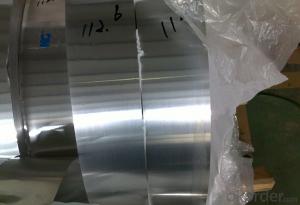Burr-free Round Edge Transformer Aluminum Strips with 0.15-3.2mm Thickness
- Loading Port:
- Shanghai
- Payment Terms:
- TT OR LC
- Min Order Qty:
- 2.5
- Supply Capability:
- 5000 m.t./month
OKorder Service Pledge
OKorder Financial Service
You Might Also Like
Burr-free Round Edge Transformer Aluminum Strips with 0.15-3.2mm Thickness
l Product Introduction
The Aluminum Strip is mainly used for refrigerator, cable ,capacitor shell material, steal-protection cover, cable sheathing, composite pipe and tube, water pipe etc. It has the property of deep drawing, high thickness accuracy, and low earring rate, etc.
l Specifications
Alloy | 1050/1060/1100/3003/5083/5052/5754/8011 |
Temper | O-H112 |
Thickness | 0.1mm-3.2mm |
Width | slitting range:15mm-1450mm |
Length | can be customized as your requirement |
Inner diameter | 150mm,305mm,505mm |
Outer diameter | can be customized,but<1600mm |
l Packaging & Delivery
Packaging detail: Covering with brown paper and plastic bag then packed with wooden plywood then directly loading into container for transshipment. For the thickness which is more than 1.50mm, one paper interleave into two sheets.
Delivery detail: within 30days
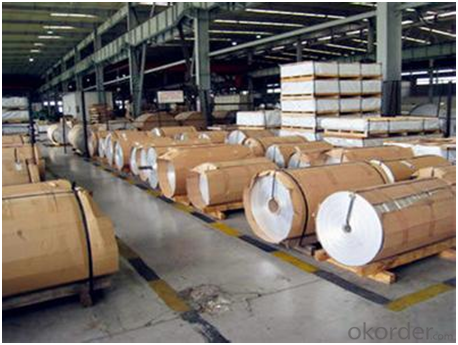
l Company Profile
CNBM International Corporation, China National Building Materials (Group) Corporation, is one of the largest companies in China building material & equipment industry, with 42,800 employees and sales in 2005 of US Dollar 4.395 billion. In 2006, China National Building Material Company Limited was listed on Hong Kong Stock Market with the stock code as 3323.
Aluminium Strip has always been one of the most popular products in CNBM. With advanced technic skills and equipment, CNBM has produced high quality aluminium strips that meet international standard.
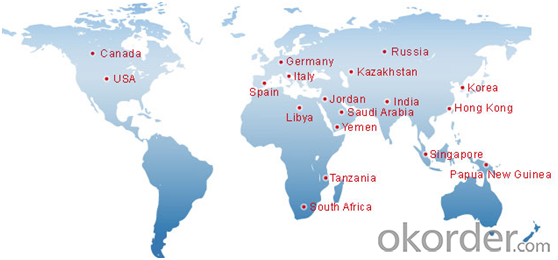
l Product Images
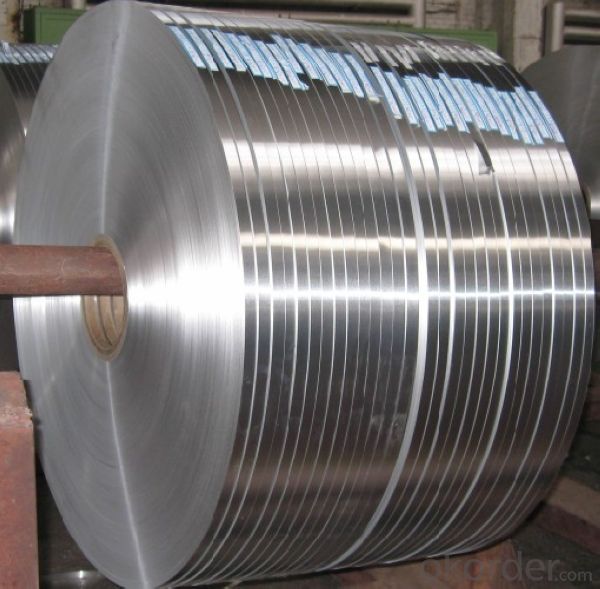

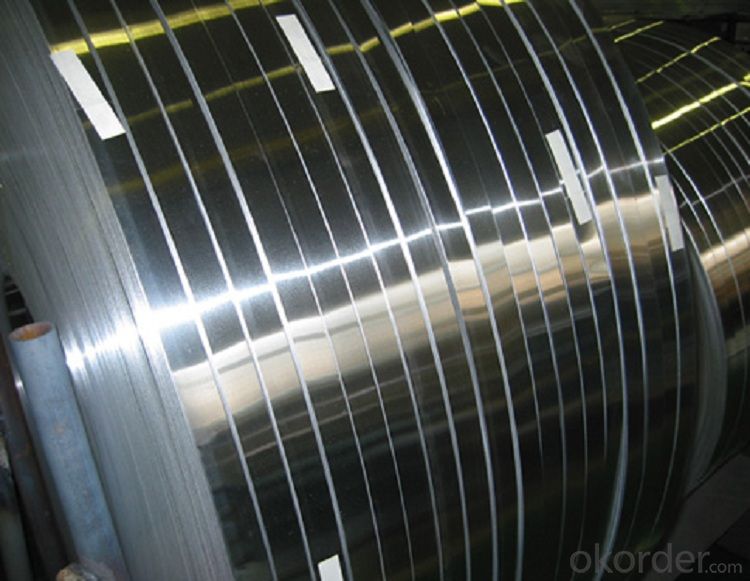
l Certificates
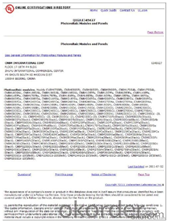


l FAQ
Q: Do you provide free samples?
A: Yes, free samples will be sent to you on freight at destination.
Q: Can I get your latest products catalogue?
A: Yes, it will be sent to you in no time.
Q: What is the MOQ?
A: 2.5 tons
Q: What are your payment terms?
A: We accept L/C, T/T.
- Q:What are the weight and density of aluminum sheets?
- The thickness and dimensions of aluminum sheets determine their weight and density. In general, aluminum has a density of approximately 2.7 g/cm³ or 2700 kg/m³. To calculate the weight, you can multiply the density by the volume of the sheet. For instance, if you have a 1-meter by 1-meter sheet that is 1 millimeter thick, the volume would be 0.001 cubic meters (1 meter x 1 meter x 0.001 meter). By multiplying this volume by the density of aluminum, you would find that the weight of the sheet is 2.7 kilograms (0.001 cubic meters x 2700 kg/m³). Keep in mind that these values may vary depending on the specific dimensions and thickness of the aluminum sheet.
- Q:How does the thermal conductivity of aluminum compare to other metals?
- The thermal conductivity of aluminum is relatively high compared to many other metals. It is often considered one of the best conductors of heat among common metals. Aluminum has a thermal conductivity of about 205 watts per meter kelvin (W/m·K), which is higher than copper (about 401 W/m·K) and even silver (about 429 W/m·K). This means that aluminum can transfer heat more efficiently than most other metals, making it a popular choice for heat sinks, radiators, and other applications that require effective heat dissipation. However, it is worth noting that some metals, such as diamond and graphene, have even higher thermal conductivity than aluminum.
- Q:How much should I be charged to have aluminum siding installed? I have a two floor single family home which is detached. I also would want new gutters installed and soffets (i think that is what they are called). One company estimated 12k and another said 10K. This would entail just putting the siding over the original siding. Any answers are appreciated.
- You have no say in the matter. The insurance company is paying the contractor to remove and dispose of the old siding. They don't care if the contractor makes a few hundred bucks selling the siding as scrap and neither should you.
- Q:What are the different methods of surface coating aluminum sheets?
- Aluminum sheets can be coated using various methods, each with its own advantages and applications. Anodizing, powder coating, and painting are the most commonly used methods. Anodizing is a process that creates a strong and corrosion-resistant layer on the surface of aluminum sheets. By immersing the sheet in an electrolyte solution and passing an electric current through it, an oxide layer is formed. This layer can be dyed to achieve different colors. Anodized aluminum sheets are widely used in architecture, automotive, and aerospace industries. Powder coating is another popular method where dry powder is electrostatically applied onto the surface of aluminum sheets. The sheet is then heated, causing the powder to melt and form a durable protective coating. Powder coating provides excellent resistance to chemicals, UV rays, and harsh weather conditions. It finds applications in construction, automotive, and electronics industries. Painting is a traditional method where liquid paint is applied onto the surface of aluminum sheets using brushes, rollers, or spray guns. This method allows for a wide range of colors and finishes. Painted aluminum sheets are commonly used in signage, architectural facades, and interior design where aesthetics and customization are important. Other methods of coating aluminum sheets include cladding, laminating, and adhesive bonding. Cladding involves attaching a different material, such as stainless steel or copper, to the surface of aluminum sheets. Laminating involves bonding a protective film to enhance durability and appearance. Adhesive bonding involves applying a layer of adhesive and then bonding a different material or coating. Ultimately, the choice of surface coating method for aluminum sheets depends on specific requirements such as durability, aesthetics, corrosion resistance, and cost for each application.
- Q:So I got this stainless steel ring but I took it to this place and apparently its not stainless it's aliminum bc of how light it is but it's really hard so how could it be aluminum?
- Aluminum is a quite soft metal, but so is gold. It is true that aluminum is light in weight but magnesium is even lighter and is common enough that a ring could be made of it. Metals can be made harder by adding small amounts of other metals or even by the way it is heat treated. .
- Q:What is the melting point of aluminum sheets?
- The melting point of aluminum sheets is approximately 660 degrees Celsius or 1220 degrees Fahrenheit.
- Q:Can aluminum sheets be used for balcony railings?
- Yes, aluminum sheets can be used for balcony railings. Aluminum is a popular material for balcony railings due to its lightweight nature, durability, and resistance to corrosion. It is a versatile material that can be easily formed into different shapes and designs, making it suitable for various architectural styles. Additionally, aluminum railings require minimal maintenance and can withstand harsh weather conditions, making them a practical and long-lasting choice for balcony railings.
- Q:im wanting to try and source my own chemicals for experiments and such in the cheapest way possiblei thought a cheap method of making powdered aluminium would be to just sandpaper aluminium kitchen foil and collect the powder, what i need to know is:how pure is aluminium foil?.....e.g is it actually mixed with some other metals and is an alloyand will the powder i collect be as good as bottled aluminium powder? i know it wont be perfect but as long as its similar that should be fineim using it for pyrotechnical experiments by the way
- Aluminum foil is pretty pure for most purposes (99.1 % pure). However, I really think sandpapering aluminum foil is not your best option. For one, aluminum foil is quite expensive, I wonder if you could just get a bunch of the powder for a cheaper price than buying an equal mass of aluminum foil. Also, how would you even begin sandpapering it? If you rub a crumpled up ball of aluminum on a rough surface, you don't get a powder, you just get a ripped up ball and a gray mark on the rough surface. But you could try, tell me if it works. However, I think you may have better odds with aluminum cans. They are cheaper and thicker thus not so prone to ripping. Although I still doubt you could get a reasonable quantity of aluminum powder from that. If all else fails, you could always try stuffing a bunch of aluminum foil in a blender.
- Q:Can aluminum sheet be used for heat shielding?
- Yes, aluminum sheet can be used for heat shielding. Aluminum has a high thermal conductivity and excellent heat dissipation properties, making it an effective material for heat shielding applications. Its ability to reflect radiant heat also makes it suitable for use in thermal barriers and insulation systems. Additionally, aluminum sheet is lightweight, corrosion-resistant, and easily fabricated, making it a cost-effective choice for heat shielding in various industries such as aerospace, automotive, and electronics.
- Q:How do you clean and maintain aluminum sheets?
- To clean and maintain aluminum sheets, follow these steps: 1. Start by wiping the surface of the aluminum sheet with a soft cloth or sponge to remove any loose dirt or debris. Avoid using abrasive materials that can scratch the surface. 2. For regular cleaning, mix a mild detergent or dish soap with warm water in a bucket or sink. Dip the cloth or sponge into the soapy water and gently scrub the aluminum sheet, applying light pressure in circular motions. Be sure to clean both sides of the sheet. 3. Rinse the sheet thoroughly with clean water to remove any soap residue. It's important to remove all traces of detergent as it can leave behind a film or residue. 4. For stubborn stains or grime, you can use a non-abrasive cleaner specifically designed for aluminum surfaces. Apply the cleaner to a cloth or sponge and scrub the affected areas. Rinse with clean water afterward. 5. After cleaning, dry the aluminum sheet thoroughly with a clean, soft cloth to prevent water spots or streaks. It's important to dry it completely to avoid any moisture that can lead to corrosion or oxidation. 6. To maintain the aluminum sheet's shine and protect it from future damage, you can apply a thin layer of aluminum polish or wax using a clean cloth. This will create a protective barrier and enhance the sheet's appearance. 7. Regularly inspect the aluminum sheet for any signs of damage, such as scratches or dents. If you notice any issues, take appropriate steps to repair or replace the sheet to prevent further damage. By following these steps, you can effectively clean and maintain aluminum sheets, ensuring their longevity and preserving their appearance.
1. Manufacturer Overview |
|
|---|---|
| Location | |
| Year Established | |
| Annual Output Value | |
| Main Markets | |
| Company Certifications | |
2. Manufacturer Certificates |
|
|---|---|
| a) Certification Name | |
| Range | |
| Reference | |
| Validity Period | |
3. Manufacturer Capability |
|
|---|---|
| a)Trade Capacity | |
| Nearest Port | |
| Export Percentage | |
| No.of Employees in Trade Department | |
| Language Spoken: | |
| b)Factory Information | |
| Factory Size: | |
| No. of Production Lines | |
| Contract Manufacturing | |
| Product Price Range | |
Send your message to us
Burr-free Round Edge Transformer Aluminum Strips with 0.15-3.2mm Thickness
- Loading Port:
- Shanghai
- Payment Terms:
- TT OR LC
- Min Order Qty:
- 2.5
- Supply Capability:
- 5000 m.t./month
OKorder Service Pledge
OKorder Financial Service
Similar products
New products
Hot products
Hot Searches
Related keywords
